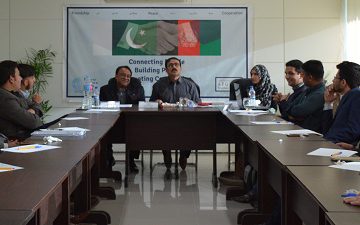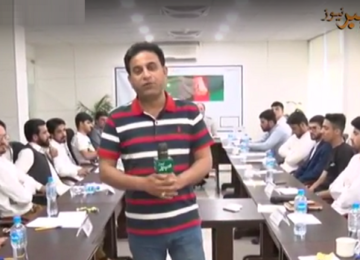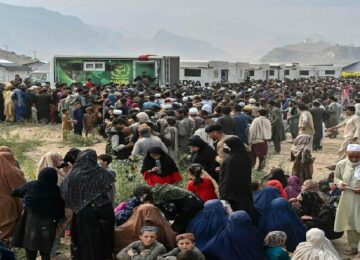March 12, 2019
For the U.S. led coalition, 2018 was one of the deadliest years since 2001 in Afghanistan. The casualties of the Allied forces are on the rise, underlining the dismal failure of the US-led coalition in achieving most of its objectives in the war-torn country.
The government in Kabul has even stopped issuing official counts of casualties, however, as per a conservative estimate for 2018, around 500 people were killed on average every month in the country. The year also saw many high profile attacks.
On October 18, 2018, a high profile attack resulted in the killing of Kandahar’s police and intelligence chiefs and inflicting wounds on the governor of the province. Another high profile bomb attack in Maidan Wardak province was on the Afghan military compound that killed over a hundred people in January this year
The number of attacks on the allied armed forces by the Taliban have increased recently as the peace talks remain in a deadlock.
Among many major underlying problems in the country, one problem that the U.S. has failed to address is corruption within government institutions. The level of corruption has damaged the roots of the Afghan fabric. The quantum of bribery is very high. Integrity Watch Afghanistan, an anti-corruption watchdog, in one of its report claimed that, “The amount of bribes estimated” was much higher than the “revenue of the Afghan government”.
The U.S. has also failed to curb the increasing production and trade of opium. Moreover, in Garmsir district, the government has imposed a tax on opium production to bolster local government’s earnings as much as the Taliban have imposed on production of opium in lands under their control. Reportedly, the Afghan officials are directly involved in this competition for greater revenue and earning.
The local farmers growing opium in Afghanistan do so out of utter desperation to earn a decent livelihood. The U.S., in the much touted objective of ‘nation building’ in Afghanistan, has failed to offer alternate production options to these farmers.
Where the production of opium and its sale in the Taliban controlled lands funds terrorism, the production on the government controlled land makes its way to the supply chain in both wholesale and retail markets in the western countries.
Further, the opium economy has undercut the public institutions, including justice and security domains. The funds from narcotics trade are used in criminal activities, supporting insurgency and fostering public corruption.
On the other hand, corruption is also holding Afghanistan back from developing at any level. Millions of dollars earmarked for reconstruction purposes were “misused” in Afghanistan. In 2011, nearly $1bn simply vanished due to the Kabul Bank Scandal, resulting from “mysterious” insider loans.
Since the U.S. invasion of Afghanistan in 2001, nothing much has changed. The U.S. is trying to negotiate with the Taliban to earn itself a face-saving exit from Afghanistan. Ironically, it was the Taliban, along with Al Qaeda, because of whom the US and its allies first invaded Afghanistan.
However, the million dollar question to be asked now is whether the U.S wants to leave Afghanistan at all; especially at a juncture when China is growing as a regional and global power?
According to a recent report, a growth of around $117 billion is set to be achieved between China and her BRI (Belt and Road Initiative) allies. Experts feel that the balance of power will shift towards South Asia. Beijing’s vision of creating an “Asian international society” certainly is not going down well with the West.
Hence, there have been plans for forming western trade alliances, such as the Trans-Pacific Partnership (TPP). George W. Bush had supported the TPP and Obama had given final touches to the plan to lay out rules for trade and investment in the Asia-Pacific region. Unfortunately, Trump pulled out of the TPP on his very first day in office.
By staying in the TPP, the US would have been in a position to help countries wanting to be a part of BRI, while minimizing economic risks. Another advantage the US lost was the leverage to offer good terms of trade, with the US market, to countries where China was the main exporter. It can no longer offer a competitive investment plan to nations, as opposed to BRI or TPP.
With the new found ally in India, if the Indo-US partnership succeeds in destabilizing Pakistan in the next few years, China will lose the momentum and the thrust of a “model project”. Therefore, it is time for Pakistan to devise a policy towards Afghanistan that is based on her own national interests. Pakistan should continue reinforcing the regional consensus (China, Russia, Iran and CAR) on Taliban as the bulwark against terrorism.
Whether or not this consensus holds after the U.S pulls out of Afghanistan – a stay that now is extended to another five years, and to which Taliban have not agreed – is a question to be addressed when the time comes.
The writer Yasmeen Aftab Ali is a lawyer, academic and political analyst. She has authored a book titled ‘A Comparative Analysis of Media & Media Laws in Pakistan.’ She can be contacted at: yasmeenali62@gmail.com and tweets at @yasmeen_9








